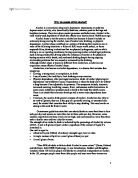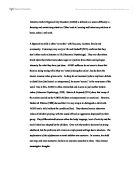What is known about how people perceive, take and communicate risks?
What is known about how people perceive, take and communicate risks?
Logic dictates that the physical consequences of hazards are fixed objective. However perceptions of risks associated with those hazards are highly subjective and as a result risk has been defined in a number of ways. Risk can be viewed as the probability of undesired consequences, the seriousness of the maximum possible undesired consequences or the product of these two outcomes. Another definition of risk is the variances of all the consequences about their mean. In addition to research which aims to identify the factors which affect our perception of risk, studies have investigated the motives which affect our propensity to take risks as well as the best techniques for communicating those risks.
Both lay person and expert assessment of risk involves human judgement. Expert judgement is likely to be more accurate but both groups are subject to common distortions of risk which tend to favour certain criteria which reflect our subjective perception of risk rather than the reality of it (Sprent, 1988). Sprent identified ten common distortions of risk. Two such distortions of risk are the notions that concentrated risks are worse than diffuse risks and involuntary risks are worse than voluntary risks.
Slovic et al (1978) studied the common distortion of risk whereby concentrated risks are regarded as worse than diffuse risks even though the latter may have a much higher death toll. Participants in his study estimated the death rates from 40 hazards using the death rate from car accidents as a point of reference. Slovic found that participants overestimated deaths from infrequent causes but underestimated deaths from infrequent causes. When participants were given a statistical frequency of death and a choice between two hazards which it could represent, they attributed more deaths to the more salient hazard, for example more deaths to murder than to diabetes, when in fact death rates for both of these hazards are the same.
Research has also found that we regard involuntary risks, such as poisoning from contaminated food as worse than voluntary risks such as smoking even though there is a much greater risk of death associated with the latter. This paradox was humorously expressed by Chauncey Starr (1969) who noted that "we are loathe to let others do unto us what we happily do to ourselves!"
Logic dictates that the physical consequences of hazards are fixed objective. However perceptions of risks associated with those hazards are highly subjective and as a result risk has been defined in a number of ways. Risk can be viewed as the probability of undesired consequences, the seriousness of the maximum possible undesired consequences or the product of these two outcomes. Another definition of risk is the variances of all the consequences about their mean. In addition to research which aims to identify the factors which affect our perception of risk, studies have investigated the motives which affect our propensity to take risks as well as the best techniques for communicating those risks.
Both lay person and expert assessment of risk involves human judgement. Expert judgement is likely to be more accurate but both groups are subject to common distortions of risk which tend to favour certain criteria which reflect our subjective perception of risk rather than the reality of it (Sprent, 1988). Sprent identified ten common distortions of risk. Two such distortions of risk are the notions that concentrated risks are worse than diffuse risks and involuntary risks are worse than voluntary risks.
Slovic et al (1978) studied the common distortion of risk whereby concentrated risks are regarded as worse than diffuse risks even though the latter may have a much higher death toll. Participants in his study estimated the death rates from 40 hazards using the death rate from car accidents as a point of reference. Slovic found that participants overestimated deaths from infrequent causes but underestimated deaths from infrequent causes. When participants were given a statistical frequency of death and a choice between two hazards which it could represent, they attributed more deaths to the more salient hazard, for example more deaths to murder than to diabetes, when in fact death rates for both of these hazards are the same.
Research has also found that we regard involuntary risks, such as poisoning from contaminated food as worse than voluntary risks such as smoking even though there is a much greater risk of death associated with the latter. This paradox was humorously expressed by Chauncey Starr (1969) who noted that "we are loathe to let others do unto us what we happily do to ourselves!"






